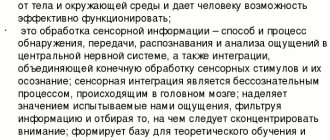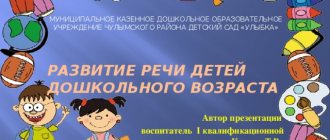Description of the “Pictogram” test according to the method of A.R. Luria
Alexander Romanovich Luria is a follower of Lev Semenovich Vygotsky, one of the founders of Russian neuropsychology. The “Pictogram” test, developed by him as part of the development of this area of science, allows us to identify the features of memorization through associative connections. The objectives of the study are:
- identifying the nuances of indirect memorization;
- assessment of memory productivity;
- determining the nature of mental activity;
- studying the level of development of imaginative thinking.
The technique is not used for diagnosing preschoolers and primary schoolchildren, but is only suitable for testing among subjects with at least 6–7 grades of education.
Testing can only be carried out on children over 12 years of age.
Application of the methodology for testing schoolchildren
The stimulus material for the test is a set of 15–20 words or phrases of concrete (“hungry child”) or abstract content (“doubt”):
- fun party;
- hard work;
- development;
- delicious dinner;
- a brave deed;
- disease;
- happiness;
- parting;
- poisonous question;
- friendship;
- dark night;
- sadness;
- justice;
- doubt;
- warm wind;
- deception;
- wealth;
- hungry child.
Moreover, the technique does not involve the use of a standardized list of words; the experimenter can create his own set or replace only a few proposed options. Thus, the test can be carried out as many times as required by working with a particular subject.
The test organizer can come up with his own set of simple phrases for diagnosis
Diagnostics are organized both in group form and individually. To conduct the study, the subject will need to be given a piece of paper and a pen or pencil.
Instructions for schoolchildren aged 12–16 years:
- The experimenter announces the conditions of the study: “We will examine your visual memory. I will begin to name the words, and your task is to draw a picture, which will then help you remember what you heard. You cannot write down or depict individual letters.”
- Then the adult clearly and loudly names the words, first specifying the serial number of each expression. The interval between utterances should not be more than 1 minute.
- While drawing, you can ask your child leading questions (“What are you drawing?” or “How will this help you remember the word?”).
- 40–60 minutes after the end of the test, during which the experimenter allows the students to do other things, the subjects are provided with forms with their answers.
- After this, the adult invites the children to independently reproduce all the words they heard, looking at the pictures shown (in the group form of the test, students will need to sign their pictograms, and in the individual test, it is recommended that the child name the concepts out of order).
For older subjects, words should be read at intervals of only 30 seconds.
During the work, the experimenter must draw the students’ attention to the fact that the test results do not depend on the level of their visual abilities.
Examples of pictograms
Pictograms can be seen in traffic rules (road signs), on various diagrams, scoreboards, navigation signs, and even in puzzles for children.
Pictogram on the road sign "Tunnel"
You can take a shower in the place where this pictogram is located.
Pictograms indicating sports disciplines
Pictograms at the airport to indicate toilets and mother and baby rooms
A pictogram that indicates where the exit is located
Pictograms for transporting goods
Processing and interpretation of results
If the subject draws little people as illustrations of all concepts, then this indicates his sociability
The content of the drawings reflects the subject’s stock of knowledge, as well as some features of his life experience and ability to abstract. Pictograms are classified into 5 types:
- A - abstract (the drawn lines are not formed into a separate image);
- Z - iconic or symbolic (images are arrows, squares, trapezoids, and so on);
- K - specific (very specific objects are presented);
- C - plot (drawn pictures are united by a specific situation);
- M - metaphorical (the drawings are the artistic creation of the subject; for example, for the concept of “joy” a jumping person is depicted).
The experimenter notes the type of each pattern and then counts the frequency of use of each type:
- If abstract and symbolic images predominate (more than 55%), then the person can be classified as a group of “thinkers” who are aimed at synthesizing the information received and generalizing. Such people have a high degree of development of abstract logical thinking.
- With frequent plot and metaphorical drawings, one can conclude that the student is creatively thinking. Such subjects are called “artists.” This result is typical mainly for children 12–14 years old.
- When images are mostly represented by certain objects of the surrounding world, this indicates the predominance of a concrete and effective way of thinking. Such people strive to approach all issues from a rational point of view. They are called "practitioners". But usually such results are observed only in adults (most often in teachers and executives).
You can make a conclusion about the level of development of the conceptual apparatus by how freely the test subject reproduces words from images in the final test.
Another additional parameter that can be determined is sociability. If the subject draws little people and remembers the words without hesitation, then he probably likes to be surrounded by people. But when it is difficult for a child to navigate by drawings of people, this indicates the immaturity of the person being tested.
The author of the technique, in addition to diagnosing the quality of memorization, also proposed assessing the exhaustion of attention. To do this, it is necessary to analyze the firmness of the pressure, as well as the increasing negligence in performing the task. The more pronounced the changes in these characteristics, the higher the exhaustion.
Assessment of qualitative indicators of thinking is carried out according to 4 criteria:
- Adequacy. To understand this property, just look at 1-2 pictures. Sometimes you need to pay attention to the author’s commentary. If a logical and substantiated connection between the concept and the image is noticeable, then the experimenter marks the pictogram with a “+” sign; if there is none, “-”. More than 70% positive marks are considered normal.
- The ability to restore images after a certain amount of time. The number of correctly named words in the final test is assessed. The norm is more than 80% of words and phrases.
- Correspondence of the pictogram to the real object. Concrete drawings are scored 1 point, abstract drawings - 3 points. If the image is difficult to classify, then 2 points are counted. Then the average is determined. The norm is more than 2 points.
- Originality. If the plot of the drawings of several test subjects matches, the image is scored 1 point, which indicates a mediocrity of the approach to completing the task. If the pictogram is unique, then 3 points are given for it. An intermediate option deserves 2 points. The norm, as in the previous case, is a result of 2 points.
The Luria pictogram allows you to evaluate not only the quality and speed of memorizing information, but also to get an idea of the ability to build associative connections between a concept and its image and such an important indicator of attention as exhaustion. Thus, in a short period of time, the experimenter receives a complete picture of the development of the basic properties of the test person’s thinking.
Appendix No. 1 “Pictogram Methodology”
The technique intended for studying mediated memorization (pictogram) involves presenting the subject with 10-15 concepts to memorize, which he must draw so that he can subsequently recall the given concepts from the drawing. After an hour, the subject is asked to reproduce the given words using the pictures. An approximate range of concepts: 1) a cheerful holiday, 2) a deaf old woman, 3) an angry teacher, 4) a girl is cold, 5) illness, 6) separation, 7) development, escape, 9) hope, 10) envy. The interpretation is similar to the ten word test.
After an hour, the subject is asked to reproduce the given words using the pictures. An approximate range of concepts: 1) a cheerful holiday, 2) a deaf old woman, 3) an angry teacher, 4) a girl is cold, 5) illness, 6) separation, 7) development, escape, 9) hope, 10) envy. The interpretation is similar to the ten word test.
Memory disorders, as well as attention disorders, are more often included in the structure of the exogenous-organic type of mental response. They often accompany neurotic disorders.
For asthenic conditions of various origins (most often somatic), the phenomena of exhaustion and weakening of the ability to remember by the end of the study are typical. With oligophrenia, a uniform decrease in immediate and operative memory is observed. With dementia in old age, as a rule, mechanical and associative memory is impaired, and memory disorders are pronounced. For schizophrenia, mnestic disturbances are not typical. Hypermnesia is typical of manic states.
This method is also used to diagnose thinking disorders and allows one to judge the nature of the subject’s associations. This projective test evaluates: 1) the technique of drawing (size, completeness, their framing, underlining, the presence of clarifying lines, differences and similarities between drawings related to different concepts); 2) arrangement of drawings on the sheet; 3) the principle underlying the associative series for memorization; 4) degree of originality or standardity.
Conclusions on the test reflect the characteristics of associative activity and are expressed by the following typical phrases:
Predominance of standard images
- in cases where the pictures coincide with those used by the majority of people in a given culture (for example, images of flags, balls, Christmas trees to remember the concept of “merry holiday”).
The predominance of attributive images
- in cases where, when depicting given concepts, the principle of belonging to something is used, i.e. Drawings that reflect objects or phenomena that are an integral part of a given concept dominate (for example, the image of weights associated with “hard work”).
The predominance of specific images -
in cases where the drawings contain objects or phenomena directly related to the situation (for example, a person lying in bed when depicting the concept of “disease”).
Predominance of metaphors -
in cases where, when depicting a given concept, specific images are used that are not directly related to it and use abstraction (for example, a cloud covering the sun when depicting a “disease”).
The predominance of personalized and individually significant images
- in cases where individually significant images are used to depict given concepts (for example, a child using the concept of “happiness”).
Predominance of organic graphics
- in cases where the drawings are dominated by incomplete lines in those images that require completeness (for example, a circle), repeated or repeated drawing of lines.
Rough organic graphics -
in cases where macrographic images dominate, underlining, framing of drawings, and excessive stereotypy of drawings are noted.
The predominance of geometric shapes -
in cases where concepts are depicted primarily by geometric figures.
Stereotyping by human figures
- in cases where the drawings are dominated by the image of human figures.
It is believed that with a mental norm, specific, attributive, standard ordered images predominate in the pictogram. With organic brain lesions - excessive stereotypy, orderliness, accuracy in images and clear numbering of pictures, their low differentiation, incomplete lines, underlining, framing of images. In schizophrenia, abstract images dominate, stereotypy, letter images and geometric figures are possible, as well as an atypical (asymmetrical, inharmonious) arrangement of drawings on the sheet.
Examples of some images of subjects.
Empty, meaningless symbols.
Symbols of patients with schizophrenia.
There is no point in deciphering the emasculated types of pictograms, since only individual symbols that symbolize anything, mainly crosses, lines, checkmarks, are devoid of objective content and even for the patients themselves do not serve as a means of communication and memorization; attempts to remember the designations of the symbols are unsuccessful.
It is worth citing some pictograms that, in appearance, give the impression of being simple and concrete, but upon closer analysis reveal signs of a deep pathology of thinking.
Stereotypes of human figures.
Healthy girl pictogram.
| Specified words | Drawing | Explanation | Playback |
| Fun party | Flowers | + | |
| Hard work | Axe | + | |
| A brave deed | Beast | Wasn't afraid of him | + |
| Hope | Girlish braids | Everything is in the future | + |
| Development | Rising curve | + | |
| Disease | Sick | + | |
| Warm wind | Hill | The wind blows around him | + |
| Poisonous question | Poison icon and question | Poison and question | + |
| Doubt | Question mark | + | |
| Sick child | Child figure | + | |
| Parting | Two crosses | + | |
| Wealth | Dollar | + | |
| Happiness | Sun | + | |
| Justice | Straight line | straight linearity | + |
| Sadness | Downturned nose | + |







